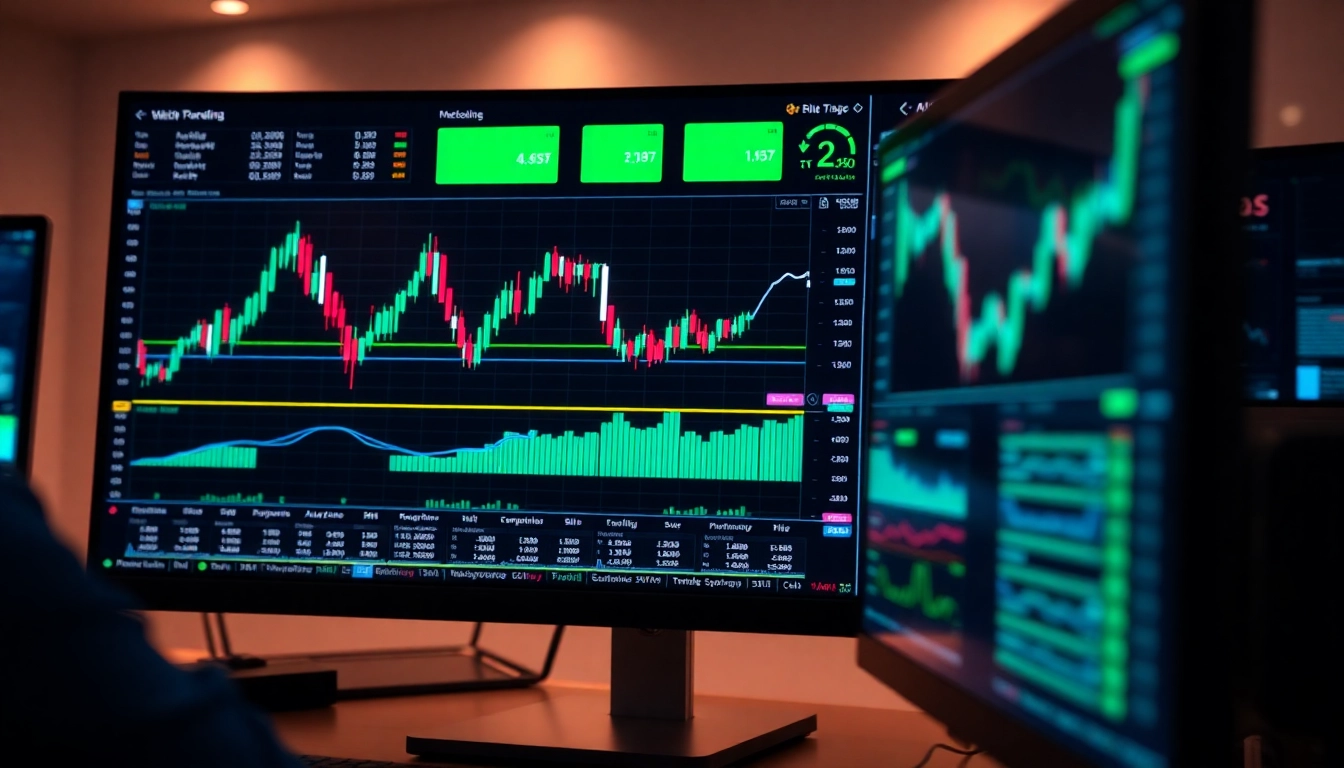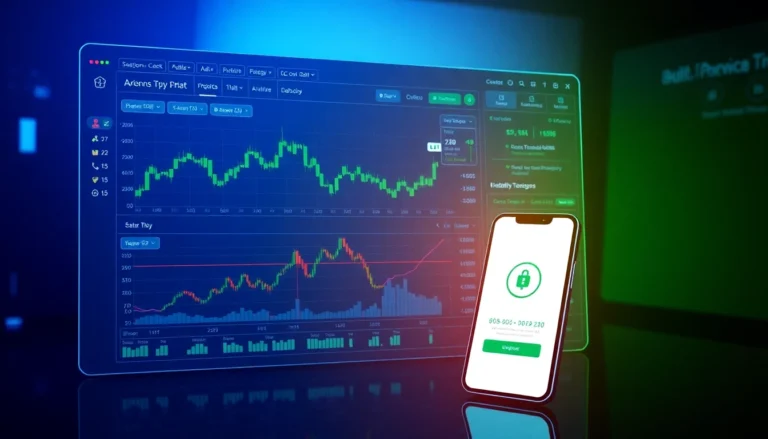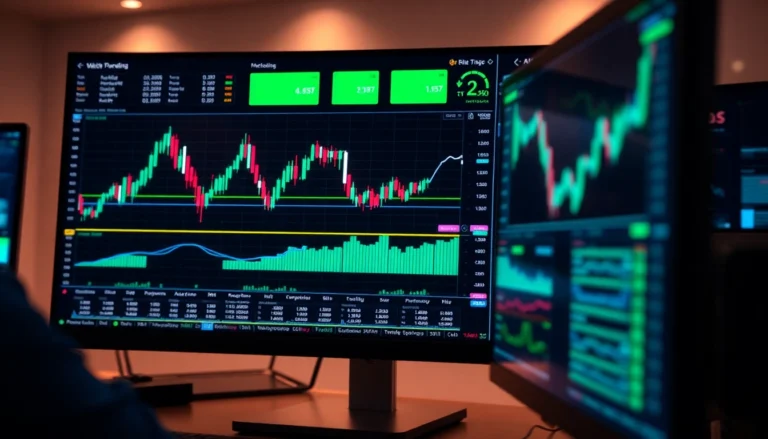
In the rapidly evolving world of financial markets, having a robust, versatile, and comprehensive charting and analysis tool is essential for traders and investors alike. One platform that has entrenched itself as a favorite among beginners and professional traders is trading view. Known for its powerful features, collaborative environment, and user-friendly interface, Trading View offers unmatched capabilities for analyzing a wide range of asset classes, facilitating smarter decision-making, and fostering a vibrant trading community. This article delves into the core features, setup processes, advanced strategies, and future trends of Trading View, providing you with a thorough understanding to elevate your trading journey.
Introduction to Trading View and Its Core Features
Understanding Trading View’s Role in Modern Trading
Trading view has revolutionized how traders and investors approach market analysis by combining advanced charting tools, real-time data, social interaction, and customizable features into a unified platform. Unlike traditional trading software that often requires complex setups or costly subscriptions, Trading View offers an accessible cloud-based solution that supports a global user base. Its role extends beyond simple charting; it acts as a conduit for collective market insights, crowd-sourced ideas, and collaborative learning activities. The platform’s reputation for independence, ease of use, and comprehensive asset coverage makes it a critical tool for day traders, swing traders, long-term investors, and quantitative analysts.
Trusting the platform’s capabilities is backed by data showing its popularity: with over 60 million traders worldwide, Trading View provides real-time tracking on major indices, cryptocurrencies, commodities, Forex pairs, and stocks. This broad asset class support ensures that traders can diversify their portfolios and react swiftly to emerging opportunities across different markets. Its social features—such as chat rooms, idea sharing, and community ratings—add a collaborative dimension that enhances decision-making and reduces the information asymmetry often faced in isolated trading environments.
Key Tools and Charting Capabilities
The backbone of Trading View’s appeal lies in its extensive charting tools. Users can access over 100 customizable indicators, drawing tools, and technical studies that help identify trends, support and resistance levels, and potential reversal points. Its intuitive drag-and-drop interface allows traders to build complex multi-pane charts, compare assets side-by-side, and overlay various technical patterns and signals. Advanced features include:
- Multiple Timeframes: Analyze markets on various granularities from minutes to months.
- Pattern Recognition: Automated detection of head and shoulders, double tops/bottoms, and flag/pennant patterns.
- Technical Indicators: Popular options such as Moving Averages, RSI, MACD, Bollinger Bands, Fibonacci retracements, and custom scripts.
- Drawing Tools: Trend lines, channels, pitchforks, and more for precise technical analysis.
- Backtesting: Evaluate strategies on historical data to optimize trades before executing in live markets.
All these tools work harmoniously within an interface that can be tailored to individual trading styles, whether you rely on fundamental analysis, technical signals, or a combination of both.
How Trading View Supports Different Asset Classes
One of Trading View’s standout features is its comprehensive support for numerous asset classes. Whether you are trading cryptocurrencies like Bitcoin, stocks in the S&P 500, forex pairs, commodities, or bonds, Trading View offers real-time data and charting tools tailored for each asset class. This versatility allows traders to expand their horizons without switching platforms, thereby streamlining their workflow.
For example, the platform provides dedicated charts and analysis tools for cryptocurrency markets, including the latest coin prices and community insights. Similarly, traders interested in equities can analyze fundamental data alongside technicals, with integrations for earnings, dividends, and economic indicators. Futures traders benefit from custom contracts and expiry data, while Forex traders can monitor currency strength and geopolitical influences directly through the platform. This broad array of market access ensures that users are well-equipped to navigate complex global markets efficiently and effectively.
Getting Started with Trading View: Setup and Basic Navigation
Creating Your Trading View Account
Getting started with Trading View is straightforward. Visit the platform’s website and create a free account by providing basic information or signing in via Google or Facebook. Premium plans are also available, which unlock advanced features like increased alerts, multiple chart layouts, and faster data feeds. After account creation, you’ll have access to a customizable dashboard—an essential starting point for organizing your workspace.
Setting Up Watchlists and Custom Indicators
Efficiency in trading hinges on quick access to relevant data. Trading View allows you to create personalized watchlists, grouping symbols across multiple asset classes. This ensures real-time updates on your selected assets, and you can add custom indicators or scripts to each chart to tailor analysis to your strategy. Importantly, the platform also supports community-developed indicators via Pine Script, enabling you to leverage hundreds of ready-made analysis tools or develop your own scripts for automated signals.
Navigating the User Interface Efficiently
Familiarity with the Trading View interface enhances productivity. The main workspace displays the current chart, with toolbars for drawing, indicator management, and timeframe selection easily accessible. The sidebar houses your watchlists, ideas, and alert settings. You can open multiple charts in custom layouts, arrange them in grids, or focus on a single asset with detailed analysis. Keyboard shortcuts further expedite navigation, making it easy to perform complex tasks without losing momentum.
Advanced Trading View Strategies and Features
Implementing Technical Analysis and Trading Ideas
Trading View is not just about passive analysis; it actively facilitates strategy development. Users can analyze historical data, identify high-probability entry and exit points, and share trading ideas with the community. The platform supports collaborative learning, where traders critique and refine each other’s strategies, fostering continuous improvement. Many successful traders document their trade setups and share insights that are publicly visible, creating a dynamic educational environment.
Using Alerts and Automated Trading Scripts
To capture opportunities swiftly, Trading View’s alert system notifies traders about market conditions aligning with their strategies. Alerts can be set on specific indicator thresholds, pattern detections, or price movements, and sent via email, SMS, or platform notifications. For more advanced automation, users can write or import Pine Script-based algorithms that run continuously, generating trading signals or executing trades through integrated brokers. Although full automated trading requires broker integration, the platform provides essential tools for semi-automated workflows.
Sharing and Collaborating with the Trading Community
The social features of Trading View encourage knowledge sharing and community engagement. Users can publish their analysis, comment on others’ ideas, and participate in polls and discussions. This collective intelligence often results in more refined trading strategies and broader market perspectives. Following top analysts or trading groups also provides real-time insights that can complement personal analysis efforts.
Optimizing Trading View for Better Market Insights
Integrating Third-Party Data and Tools
While Trading View offers a wealth of built-in data, traders can enhance their analysis by integrating third-party tools, data feeds, and custom scripts. It supports importing external data, connecting with APIs, and utilizing addons that extend its analytical capacity. This flexibility ensures traders stay ahead with the most relevant and comprehensive market information.
Utilizing Multiple Charts and Layouts
Multichart setups allow side-by-side comparisons, simultaneous analysis of different timeframes, or multi-asset tracking for correlation studies. Customizable layouts save time and help visualize complex scenarios. Trading View’s layout templates streamline switching between different setups, especially useful during volatile market sessions.
Analyzing Performance Metrics and Trading Results
Tracking your trading performance is crucial for improvement. Trading View enables users to manage trade journals, record investments, and analyze win/loss ratios, profitability, and risk management metrics. By reviewing historical analysis and automation outcomes, traders can refine their strategies and adapt to changing market conditions.
Future Trends and Best Practices for Trading View Users
Emerging Features in Trading View Development
Trading View continues to innovate with features like AI-driven pattern recognition, enhanced mobile interface, and real-time social trading innovations. Upcoming integrations with emerging financial instruments and expanded automation tools promise even greater flexibility, making it an indispensable component of modern trading arsenals.
Adapting to Market Changes with Trading View Updates
Markets are dynamic, demanding traders stay informed about platform updates that incorporate new asset classes, analytical techniques, and data security enhancements. Regularly exploring updates ensures users leverage the latest technology aligned with market innovations and regulatory developments.
Ensuring Security and Data Privacy in Trading Platforms
As trading platforms handle sensitive data, prioritizing security is essential. Trading View employs encryption, two-factor authentication, and privacy controls to safeguard user information. Understanding best practices—such as using strong passwords and secure networks—can further minimize risks and ensure a safe trading environment.





